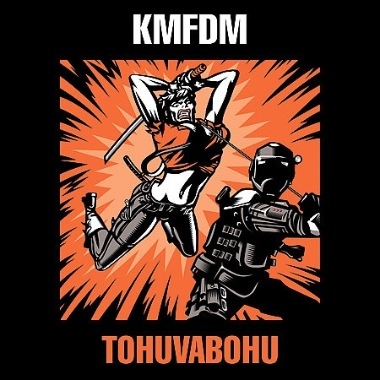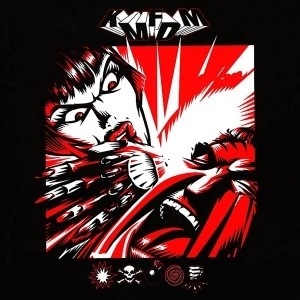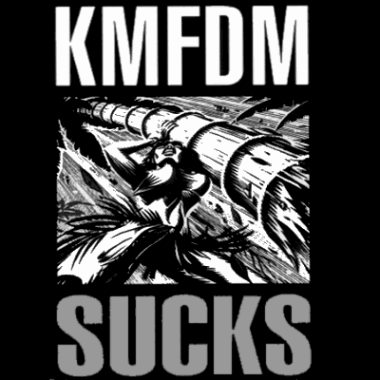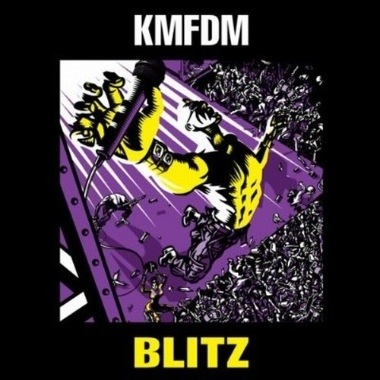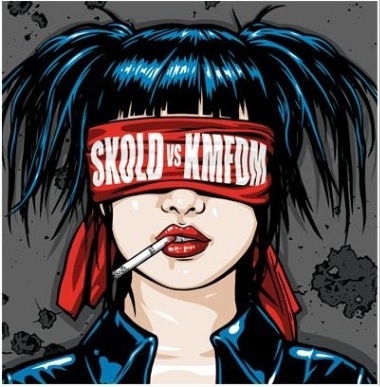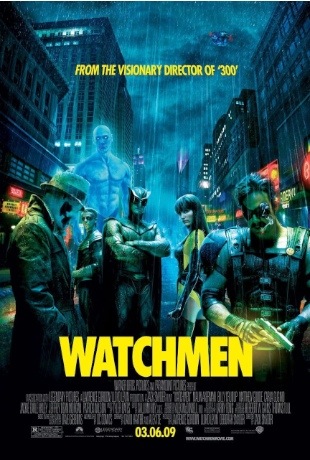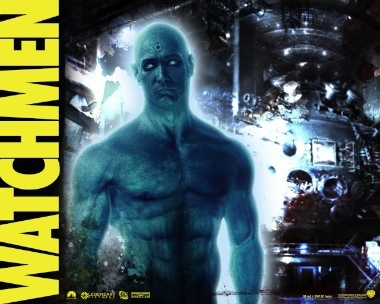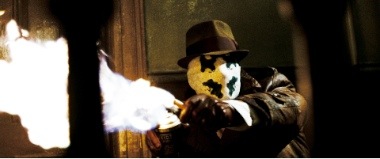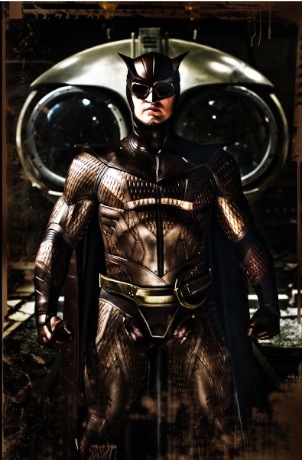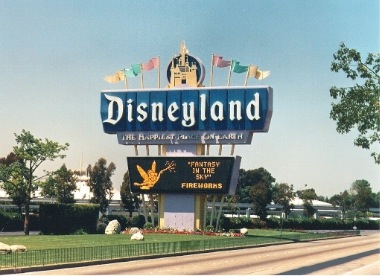A Fistful of Revelation
 Sun, April 5, 2009 at 4:41 AM
Sun, April 5, 2009 at 4:41 AM For a person such as myself, the following statement borders on life-altering revelation:
I think I can feel myself beginning to like Street Fighter more than Soulcalibur.
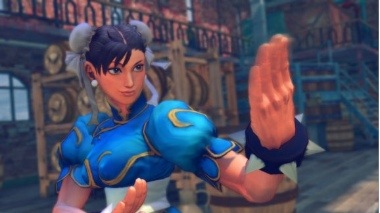 Trust me when I say that typing those words is almost scary for me.
Trust me when I say that typing those words is almost scary for me.
To really understand why, you must know my background when it comes to fighting games. I been a Soulcalibur addict from day one on the Dreamcast, having bought the first title on a whim when I really didn’t like fighting games much at the time. Since then I’ve been addicted to the series, breathlessly anticipating every new installment and spending countless hours playing it by myself and with friends (and there are a lot of Soulcalibur players of similar skill as myself in my circle of friends).
 I’ve never been much of a fighting game fan, either. Sure, I like to dabble in them quite a bit. I’ve picked up a number of Dead or Alive games, tried a Virtua Fighter or two, and maintained a steady yet completely unexplainable fascination with Mortal Kombat even though I can’t stand its fighting mechanics, but nothing ever hooked me. Soulcalibur was the only one that kept me coming back.
I’ve never been much of a fighting game fan, either. Sure, I like to dabble in them quite a bit. I’ve picked up a number of Dead or Alive games, tried a Virtua Fighter or two, and maintained a steady yet completely unexplainable fascination with Mortal Kombat even though I can’t stand its fighting mechanics, but nothing ever hooked me. Soulcalibur was the only one that kept me coming back.
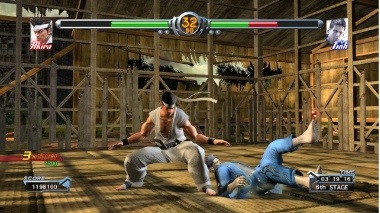 On top of all this, my attitude toward Street Fighter in particular has traditionally been one of condescension. I thought its success was due to the many gamers who were on a nostalgia high, so lost in their memories of their childhood days spent playing Street Fighter that they didn’t realize it had become dated, intimidating to newcomers, and irrelevant in the modern fighting game scene.
On top of all this, my attitude toward Street Fighter in particular has traditionally been one of condescension. I thought its success was due to the many gamers who were on a nostalgia high, so lost in their memories of their childhood days spent playing Street Fighter that they didn’t realize it had become dated, intimidating to newcomers, and irrelevant in the modern fighting game scene.
But somewhere, deep within me, a strange desire to learn how to play Street Fighter, to be able to enjoy it like so many other gamers around me, wouldn’t go away. It had stuck with me for years. Maybe, just maybe, my hatred of the series was due to the tiniest bit of envy of those players who seemed to be having so much fun with something that I apparently couldn’t even begin to wrap my head around.
 This made it all the more frustrating that every time I would try to let it into my heart it would turn me away. The early Street Fighter games always seemed to meet my disdainful expectations: they didn’t so much as try to teach me their secret ways, I got killed repeatedly by the weakest of enemies, and I could never quite grasp where that magical fascination everyone else seemed to feel came from. All I saw was an overly difficult, overly simple game where each character only had a few moves, most of the fighting came down to repetition and cheesiness, and both depth and longevity seemed to be severely lacking.
This made it all the more frustrating that every time I would try to let it into my heart it would turn me away. The early Street Fighter games always seemed to meet my disdainful expectations: they didn’t so much as try to teach me their secret ways, I got killed repeatedly by the weakest of enemies, and I could never quite grasp where that magical fascination everyone else seemed to feel came from. All I saw was an overly difficult, overly simple game where each character only had a few moves, most of the fighting came down to repetition and cheesiness, and both depth and longevity seemed to be severely lacking.
Well, it was a rocky start, and I’m not entirely sure what did it this time, but Street Fighter IV managed to change something. Slowly but surely it did what no other Street Fighter game had yet managed to do: show me what all the damn fuss was about and let me have a good time with the revered series.
I’m sure that I was overly harsh on the old games just as I’m sure that some of my complaints stand true. Ultimately such discussion really isn’t the point, especially of this particular tale.
 What I have now discovered about Street Fighter seems remarkably obvious in a way, yet I can also see why I failed to pick up on it with no one to tell me any better. The simplicity of the move set and the control scheme should not lead to repetitive play or a lack of strategic depth as I had once thought, at least not in the hands of the right player.
What I have now discovered about Street Fighter seems remarkably obvious in a way, yet I can also see why I failed to pick up on it with no one to tell me any better. The simplicity of the move set and the control scheme should not lead to repetitive play or a lack of strategic depth as I had once thought, at least not in the hands of the right player.
What it should lead to is a system where what is important is not showing off a broad range of flashy moves, but rather knowing your character’s entire arsenal by heart and being able to call up any attack in a split second without thinking to properly react to the lightning-fast battle conditions.
 It's easy to get drawn into the trap of thinking that Street Fighter's simple controls and move set lead to a low barrier of entry. This is not the case. There is quite a steep learning curve. This caught me by surprise and drove me away from the series many times. Once you get past it, however, the surface simplicity works in the game’s favor. Street Fighter avoids the problem of some fighting games that drown in their own complexity, making hard to pull off that one, particular, elusive move or encouraging button-mashing because there are so many obscure inputs that it nearly ceases to matter what you’re actually pressing.
It's easy to get drawn into the trap of thinking that Street Fighter's simple controls and move set lead to a low barrier of entry. This is not the case. There is quite a steep learning curve. This caught me by surprise and drove me away from the series many times. Once you get past it, however, the surface simplicity works in the game’s favor. Street Fighter avoids the problem of some fighting games that drown in their own complexity, making hard to pull off that one, particular, elusive move or encouraging button-mashing because there are so many obscure inputs that it nearly ceases to matter what you’re actually pressing.
Street Fighter’s strengths have been made especially clear to me recently after returning to my beloved Soulcalibur IV for the first time since putting a good number of hours into Street Fighter IV.
 The characters in Soulcalibur moved like they were mired in molasses. Combatants I had once thought of as peppy dragged their feet, in no particular hurry to lead my puny self to a victory anytime soon. I struggled to remember the move inputs for characters that I had once believed I was well-acquainted with, as there were just so many moves that I kept pulling off the wrong ones.
The characters in Soulcalibur moved like they were mired in molasses. Combatants I had once thought of as peppy dragged their feet, in no particular hurry to lead my puny self to a victory anytime soon. I struggled to remember the move inputs for characters that I had once believed I was well-acquainted with, as there were just so many moves that I kept pulling off the wrong ones.
I say this not to knock Soulcalibur. Once I spent a little more time with it I began to regain my footing with it and everything seemed a little more right with the world. I say this only to point out how big of a difference I truly noticed between the two. Playing Soulcalibur again after spending time with and actually learning a new fighting game for the first time in my fighting game career made me see my precious weapons-based fighter in a slightly different light.
It made me question which game I was really having more fun with. No other fighting game has ever come close to raising that question in my mind before.
 I am far from having made a decision one way or the other on this issue. I’m not about to write off a series I have spent so many wonderful moments with in the past in favor of a shiny newcomer without giving each one of them their fair shot.
I am far from having made a decision one way or the other on this issue. I’m not about to write off a series I have spent so many wonderful moments with in the past in favor of a shiny newcomer without giving each one of them their fair shot.
The important point here is that I have finally gotten my wish. I have seen the Street Fighter light. The draw of this classic series is no longer a mystery to me. Whichever game I ultimately decide is on top in my mind, if indeed I do decide that either even needs to be considered “better”, I am happy to have finally solved the Street Fighter puzzle.
I’m glad Street Fighter kept calling to me for all these years, continually tempting and teasing me, making me want to like a game that I couldn’t figure out, because now I feel a new addiction to a fighting game like I haven’t felt since my early days with the Soulcalibur series, and it really is a great feeling.
It’s nice to finally meet you, Street Fighter. You might just have been worth the wait.
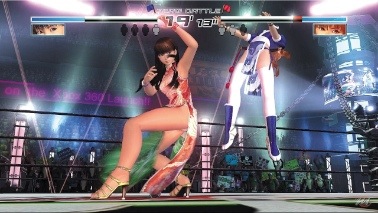 Oh, and, incidentally, I also played some of Dead or Alive 4 again for comparison’s sake. That game is just truly terrible. In so, so many ways. How a game with such floaty controls, such a reliance on tedious combo memorization, a roster of characters that all look exactly the same except for the hairstyle, and fighting styles that are distressingly hard to tell part from each other became so popular is one puzzle I am more than happy not knowing the answer to.
Oh, and, incidentally, I also played some of Dead or Alive 4 again for comparison’s sake. That game is just truly terrible. In so, so many ways. How a game with such floaty controls, such a reliance on tedious combo memorization, a roster of characters that all look exactly the same except for the hairstyle, and fighting styles that are distressingly hard to tell part from each other became so popular is one puzzle I am more than happy not knowing the answer to.
Oh yeah, the breasts. I almost forgot. Puzzle solved.



